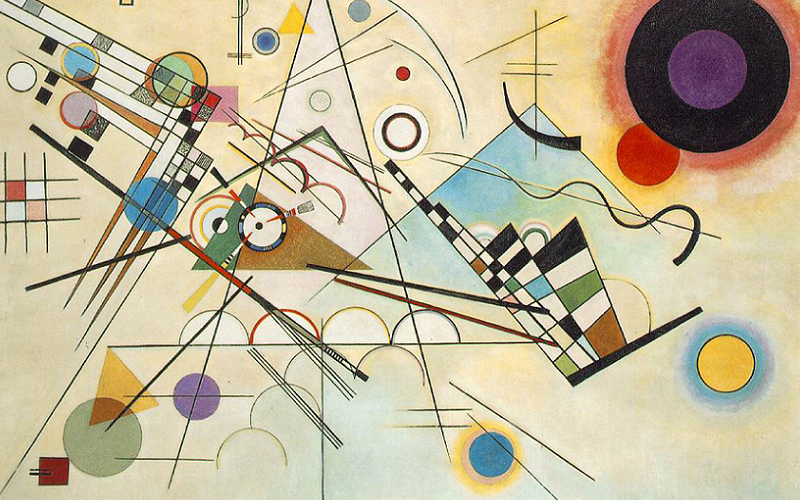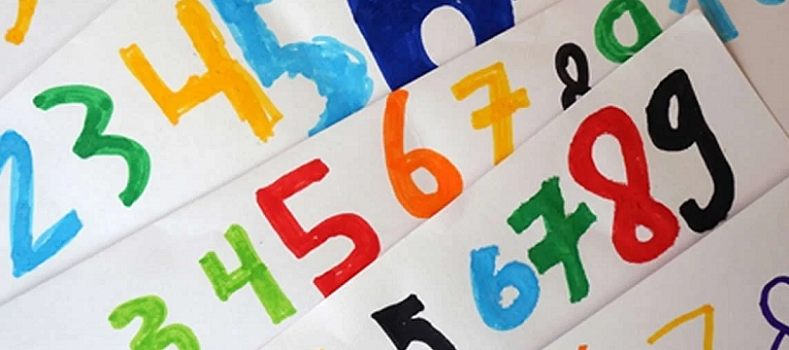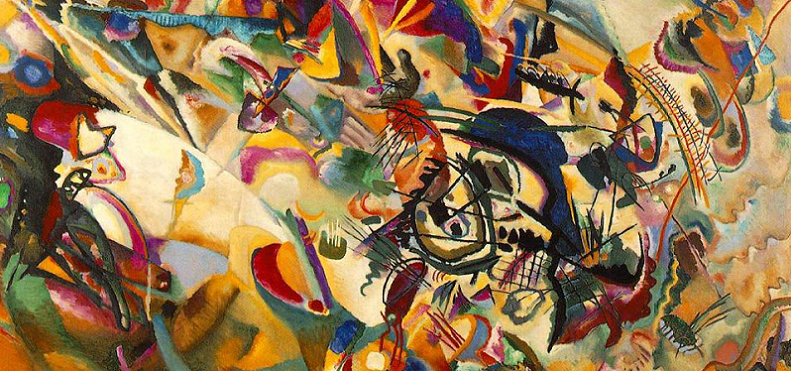
Have you ever tasted a color or seen a sound? For some individuals, this is their everyday reality. Synesthesia is a fascinating neurological phenomenon where two or more senses blend together, creating a unique perception of the world. It affects a small percentage of the population and has been the subject of much scientific research and artistic inspiration. Here we explore the world of synesthesia, its different types, how it affects individuals, and how it has influenced art and culture.
What Is Synesthesia?
Synesthesia is a neurological phenomenon in which a person’s senses blend together, causing one sensory experience to trigger another. For example, when a synesthete hears a sound, they may also see a color or taste a flavor, despite there being no actual sensory input for that experience.
This unusual sensory experience can be either involuntary or consistent, and is often described as a merging or crossing of the senses. Synesthesia is not a disorder or illness, but rather a variation of normal human perception.
Synesthesia affects a small percentage of the population, estimated to be around 4% of people, and it is more common in women than men. There are many famous artists, musicians, and writers who have been identified as synesthetes, including Wassily Kandinsky, Franz Liszt, and Vladimir Nabokov.
Types of Synesthesia
Synesthesia is a fascinating neurological phenomenon that involves the blending of different senses. There are many different types of synesthesia, each involving a unique combination of senses. Here are some of the most common types of synesthesia:
- Grapheme-color synesthesia: In this type of synesthesia, a person sees letters, numbers, or words as having specific colors. For example, the letter “A” might be seen as always being red, while the number “2” might be seen as always being green.
- Chromesthesia: Chromesthesia, also known as sound-color synesthesia, involves the perception of colors in response to sound. For example, a person might see a yellow color when hearing a trumpet, or a blue color when hearing a flute.
- Spatial-sequence synesthesia: In this type of synesthesia, numbers, days of the week, or months of the year are perceived as having a specific location in space. For example, a person might see January as being located to the left of February.
- Taste-color synesthesia: Taste-color synesthesia involves the association of specific colors with different tastes. For example, a person might perceive sweet tastes as being blue or red, while sour tastes are seen as yellow or green.
- Mirror-touch synesthesia: Mirror-touch synesthesia is when a person feels sensations of touch when they see someone else being touched. For example, if they see someone being poked, they may feel a similar sensation on their own body.
- Number-form synesthesia: This type of synesthesia involves the association of numbers with a specific visual image or shape. For example, a person might perceive the number “5” as being shaped like a star.
- Lexical-gustatory synesthesia: In this type of synesthesia, certain words or sounds trigger the perception of specific tastes in the mouth. For example, a person might taste chocolate when hearing the word “brown.”
- Olfactory-color synesthesia: This type of synesthesia involves the association of specific colors with different smells. For example, a person might perceive the smell of lavender as being purple.

Causes and Prevalence of Synesthesia
The exact causes of synesthesia are not yet fully understood, but it is believed to be related to differences in brain structure or function. Some studies have suggested that synesthesia may be due to cross-activation between brain regions that are responsible for processing different senses.
This cross-activation may be due to increased connectivity between these regions or to differences in the neural pathways that connect them. Some genetic factors have been identified that may play a role in synesthesia, although the precise genes involved are still being studied.
Synesthesia is a relatively rare phenomenon, with estimates suggesting that it affects around 4% of the population. It is more common in women than men, and is believed to be present from birth. Studies have found that synesthesia tends to run in families, suggesting that there may be a genetic component to its development. However, the exact mode of inheritance is still being investigated.
Synesthesia can occur in many different forms and can involve different combinations of senses. Some types of synesthesia are more common than others. For example, grapheme-color synesthesia, where letters or numbers are perceived as having specific colors, is one of the most common forms of synesthesia. Chromesthesia, or sound-color synesthesia, is also relatively common.
Many famous artists, musicians, and writers have been identified as synesthetes, including Wassily Kandinsky, Franz Liszt, and Vladimir Nabokov. However, it is important to note that not all synesthetes are creative or artistic, and that synesthesia can affect people from all walks of life.
In recent years, there has been growing interest in synesthesia and its potential applications. Some researchers have suggested that understanding synesthesia could help us to better understand how the brain processes information and could lead to new insights into how we perceive the world around us. Some have suggested that synesthesia could be harnessed to improve memory or learning, or to develop new forms of art or expression.

Living with Synesthesia
Living with synesthesia can be a unique and complex experience. Synesthesia is a neurological phenomenon in which a person’s senses blend together, causing one sensory experience to trigger another. This unusual sensory experience can be either involuntary or consistent, and is often described as a merging or crossing of the senses. Synesthesia is not a disorder or illness, but rather a variation of normal human perception.
While synesthesia can be fascinating, it can also be overwhelming or distracting in certain situations. Synesthetes perceive the world in a unique and multi-sensory way. They may have difficulty focusing on a conversation if they are also experiencing vivid colors or patterns in response to the sounds around them.
Synesthesia can also be challenging in social situations, particularly if others do not understand or appreciate the synesthete’s experiences. Synesthetes may feel isolated or misunderstood, or may struggle to explain their perceptions to others.
However, some synesthetes find that their synesthetic experiences can be beneficial for memory retention. For example, a person who associates colors with letters may find it easier to remember a word by recalling its associated color.
Synesthesia has also been linked to increased creativity and artistic ability, particularly in fields such as music, art, and literature. Many famous artists, musicians, and writers have been identified as synesthetes, and some have suggested that their unique sensory experiences have influenced their creative work. This has led to the concept of happiness science — the belief that happiness can be, to some extent, studied scientifically.
Synesthetes may develop coping strategies to help them manage their synesthetic experiences. For example, a person who experiences overwhelming colors or patterns in response to certain sounds may learn to avoid or minimize exposure to those sounds. Some synesthetes also find that mindfulness techniques, such as meditation or deep breathing, can help them to manage their sensory experiences.

Synesthesia in Art and Culture
Synesthesia has had a significant influence on art and culture throughout history. Many famous artists, musicians, and writers have been identified as synesthetes, and some have suggested that their unique sensory experiences have influenced their creative work.
One of the most famous synesthetes in history was Wassily Kandinsky, a Russian painter and art theorist who is credited with creating some of the first abstract paintings. Kandinsky associated colors with certain emotions and musical tones, and believed that art should aim to express these emotional and spiritual qualities. He believed that his synesthetic experiences gave him a unique perspective on the world, and that this perspective was reflected in his art.
Many musicians have also been identified as synesthetes. For example, the composer Franz Liszt associated different keys with different colors and used these associations to guide his composition. Similarly, the composer Olivier Messiaen used his synesthesia to create music that evoked vivid colors and visual imagery. Some modern musicians, such as Pharrell Williams and Lorde, have also been identified as synesthetes.
In literature, synesthesia has been used to create rich and evocative descriptions. For example, the writer Vladimir Nabokov used synesthetic descriptions in many of his works, such as in his novel “Lolita,” where he described the sound of a car as being “like a piece of metal ripping loose.”
Synesthesia has also had a significant impact on film and animation. Many animated films, such as “Fantasia” and “Yellow Submarine,” have incorporated synesthetic elements into their visual and auditory design. Some filmmakers, such as David Lynch and Terry Gilliam, have also used synesthetic elements in their work to create surreal and dreamlike worlds.
In recent years, there has been growing interest in using synesthesia to create new forms of art and expression. For example, some artists have created installations that combine visual and auditory stimuli to create a synesthetic experience for viewers. Similarly, some musicians have experimented with using sound and color to create new forms of multimedia performance.
Current Research on Synesthesia
Current research on synesthesia is focused on understanding the causes and mechanisms of the phenomenon, as well as its potential applications. Here are some of the recent research findings and ongoing studies in this area:
- Brain imaging studies: Brain imaging techniques, such as functional magnetic resonance imaging (fMRI) and electroencephalography (EEG), have been used to study the neural mechanisms underlying synesthesia. These studies have shown that synesthesia is associated with increased connectivity between brain regions involved in processing different senses.
- Genetic studies: Researchers have identified genetic factors associated with synesthesia, including a gene called SYNE1. However, the exact mechanisms by which these genes influence synesthesia are still being studied.
- Cross-modal associations: Studies have shown that everyone has some degree of cross-modal association, or the tendency for one sense to trigger a response in another sense. Researchers are studying how these associations differ between synesthetes and non-synesthetes, and what factors contribute to the development of synesthesia.
- Applications of synesthesia: Some researchers have suggested that understanding synesthesia could help us to develop new forms of art and expression, or to improve memory and learning. For example, some studies have found that synesthetic experiences can improve memory retention and recall.
- Synesthesia in neurodivergent populations: Some researchers are studying the prevalence and nature of synesthesia in populations with neurodivergent conditions, such as autism spectrum disorder (ASD). These studies have shown that synesthesia is more common in individuals with ASD than in the general population, and that the types of synesthesia experienced may differ from those in non-ASD individuals.
- Cross-cultural differences: Some studies have investigated whether synesthesia is experienced differently across different cultures. These studies have found that the types of synesthesia experienced may be influenced by cultural and linguistic factors.
